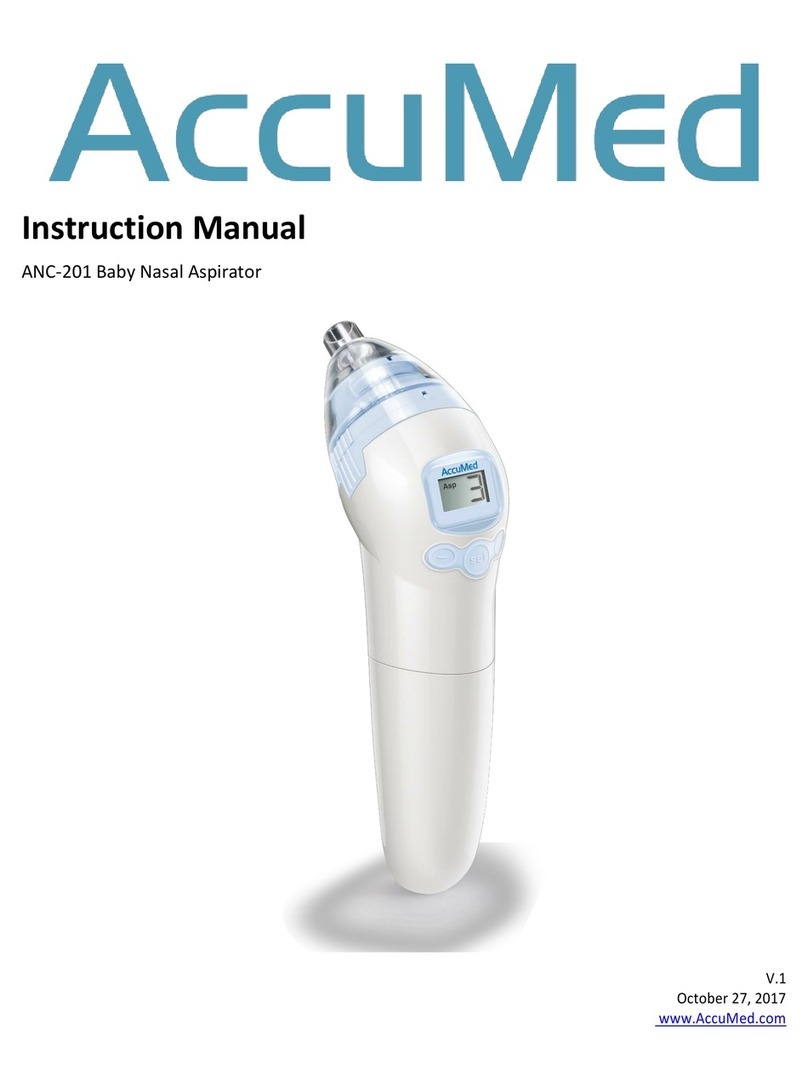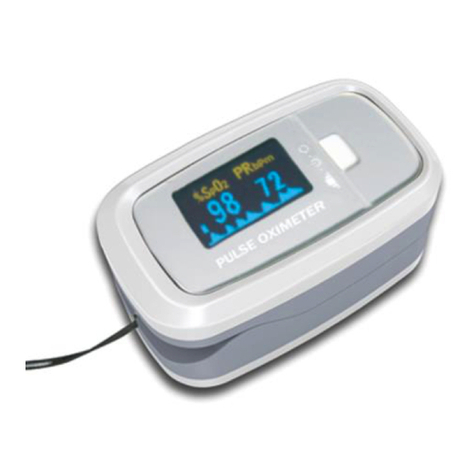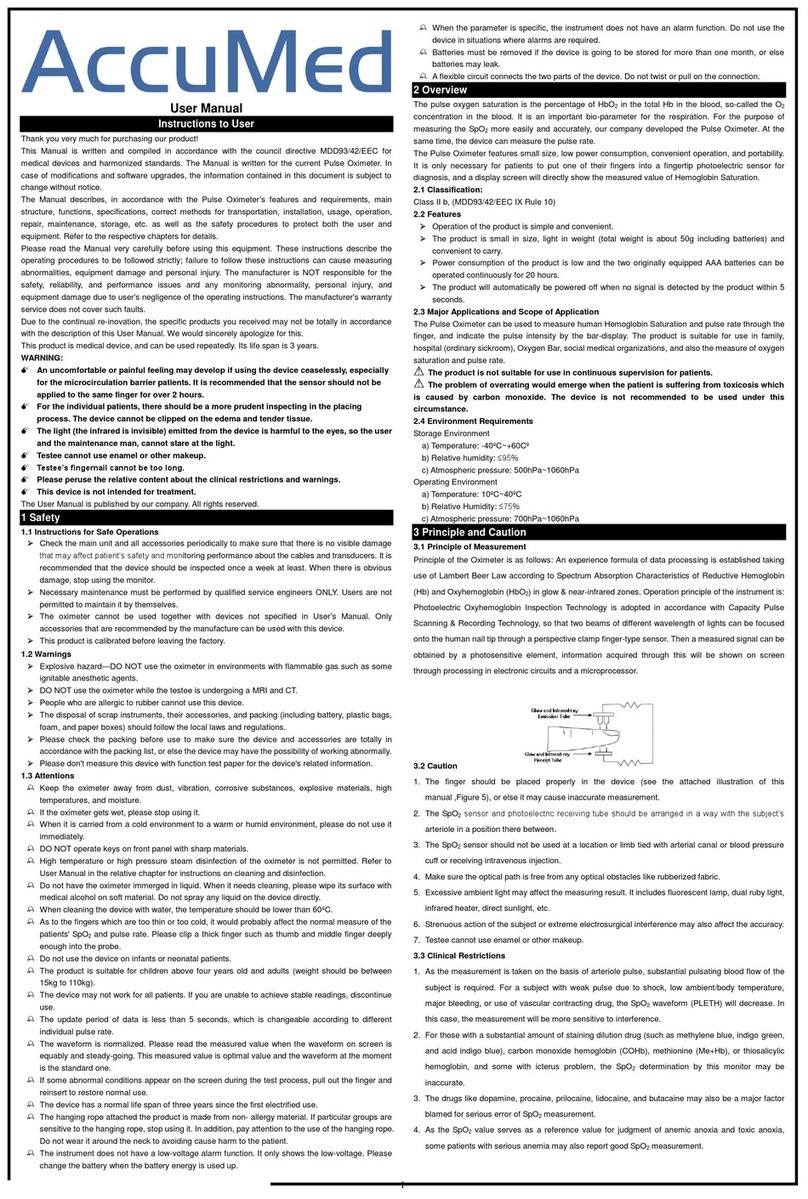D. The SpO2sensor should not be used at a location or limb tied with arterial canal or blood
pressure cuff or receiving intravenous injection.
E. Make sure the optical path is free from any optical obstacles like rubberized fabric, otherwise it
may result in venous pulsation and inaccurate measure of SpO2.
F. Excessive ambient light may affect the measuring result. It includes fluorescent lamp, dual ruby
light, infrared heater, direct sunlight and etc.
G. Strenuous action of the testee or extreme electrosurgical interference may also affect the
accuracy.
H. Testee can not use enamel or other makeup.
I. Please clean and disinfect the device after operating according to the user manual.
3.3. Clinical restrictions
A. As the measure is taken on the basis of arteriole pulse, substantial pulsating blood flow of the
testee is required. For a testee with weak pulse due to shock, low ambient/body temperature,
major bleeding, or use of vascular contracting drug, the SpO2waveform (PLETH) will decrease.
In this case, the measurement will be more sensitive to interference.
B. For those with a substantial amount of staining dilution drug (such as methylene blue, indigo
green and acid indigo blue), or carbon monoxide hemoglobin (COHb), or methionine (Me+Hb)
or thiosalicylic hemoglobin, and some with icterus problem, the SpO2determination by this
monitor may be inaccurate.
C. The drugs like dopamine, procaine, prilocaine, lidocaine and butacaine may also be a major
factor blamed for serious error of SpO2measure.
D. The SpO2value serves only as a reference value for judgement of anemic anoxia and toxic
anoxia, some patients with serious anemia may also report good SpO2measurement.
4. Technical specifications
A. Display mode:double Color OLED display
SpO2measuring range: 35%~100%
Pulse rate measuring range: 30bpm~240bpm
Pulse waveform display: bar graph display
Battery indication: OLED Signal
B. Power supply requirement:
1.5V (AAAsize) alkaline batteries × 2
Adaptable range: 2.6V~3.6V
4






























